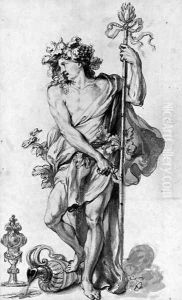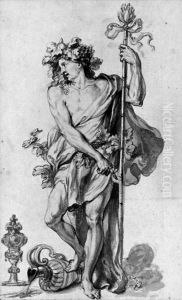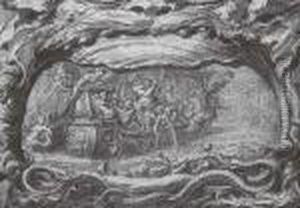Antoine Lepautre Paintings
Antoine Lepautre, also spelled Le Pautre, was a French architect and engraver, born in Paris in 1621. He was part of a family deeply involved in the arts; his brother Jean Lepautre was a well-known designer and engraver, and his other brother Pierre Lepautre was an architect and sculptor. Antoine Lepautre is often recognized for his elaborate and decorative style that contributed to the opulent look of French Baroque architecture during the reign of Louis XIV.
Lepautre's career was primarily based in Paris, where he was appointed as an architect to the king, a prestigious position that allowed him to work on various royal projects. Among his significant works, he was involved in the design of the Hôtel de Beauvais, the Hôtel de Conti, and parts of the Château de Vaux-le-Vicomte. He is also known for his work on the church of the Val-de-Grâce in Paris, where he succeeded François Mansart and contributed to the lavish interior decoration.
In addition to his architectural work, Lepautre was a skilled engraver and designer of ornaments. His engravings were influential in spreading the French Baroque style throughout Europe, and they often depicted grandiose interior designs and elaborate decorative elements that were characteristic of the period.
Despite his successes, Lepautre's career was occasionally overshadowed by the more famous architects of his time, such as Louis Le Vau and Jules Hardouin-Mansart. Nevertheless, Lepautre's distinctive and florid approach to design helped to define the visual language of the French Baroque and influenced the course of European architecture and decorative arts during the 17th century.
Lepautre's contributions to architecture were not only limited to grand projects; he also designed a range of furniture and interior decorations that further expressed his baroque sensibilities. His works were characterized by a sense of movement and complexity, incorporating a rich interplay of forms and details.
Antoine Lepautre passed away in 1679, leaving behind a legacy that has been appreciated in the context of French Baroque architecture and design. His body of work remains a testament to the elaborate and sumptuous tastes of the era, and his influence continued to be felt through the engravings and designs that circulated widely even after his death.


